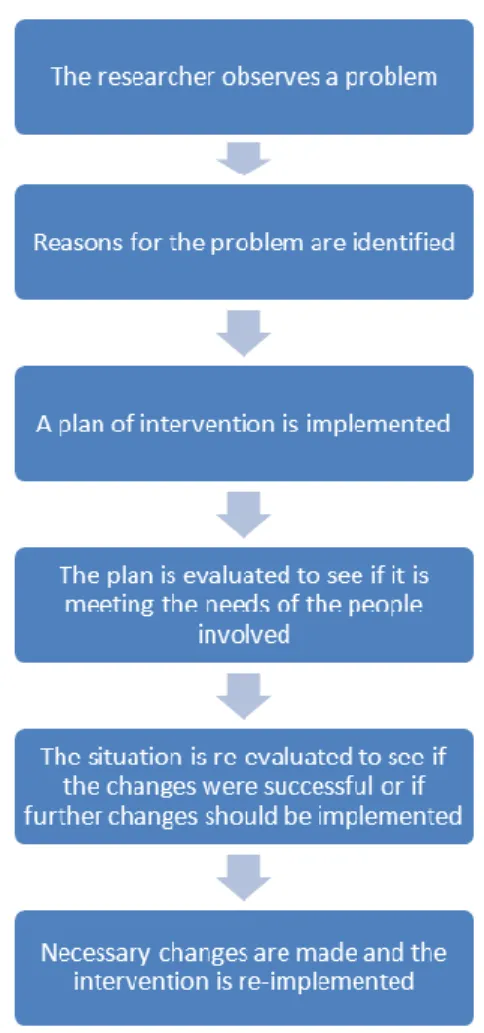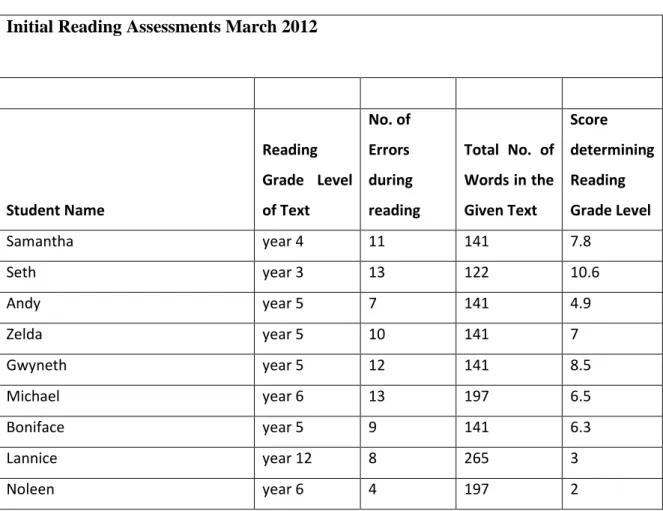Data collected from the entire study group included written and verbal feedback on the effects of the approach. This is submitted in fulfillment of the requirements for the degree Master in Applied Language Studies at the University of KwaZulu-Natal, Pietermaritzburg.
Background to the study
More problematic, however, is the lack of a reading culture; students see no benefit or value in reading at all (Ntuli & Pretorius, 2005). Teachers in other subjects, both in the ELDV and related BCom4 components such as Mathematics and Economics, have expressed similar frustration at students' lack of reading skills.
The Nature of the Research
Reasons for the Study
Jansen (1998) described some of the problems involved in the implementation of OBE such as political agendas, reduced resources, lack of teacher training and hasty implementation, little regard for the weak learning and teaching culture that exists in South Africa and limited human resource capacity to cope with such changes. However, it should be added at this point that research on literacy acquisition in science, English and education respectively has been carried out for many years in South Africa (Parkinson, 2000; . Balfour, 2002; Mgqwashu, 2009).
Research Questions
Universities certainly have no faith in the paper qualifications with which prospective students apply." (The Natal Witness, 2011:12). How will any improvements in students' reading, comprehension and writing skills be measured.
Organization
LITERATURE REVIEW
Introduction
Defining ―Literacy‖
- The Literacy Debate & New Literacy Studies
- Autonomous & Ideological Literacy
- Multiple Literacies & the New London School
- Critical Literacies
Cope and Kalantzis (2000) discuss the need to design a new pedagogy that fits the new definitions of literacy. They should help them become more aware of the way language functions in different forms of communication within the curriculum.
Critical Literacy Reading Models
- Four Components of an Early Reading Model
- Systemic Functional Grammar & the Genre Approach
- The Four Quadrant Model
- Explanation of the Model
The far right end of the X-axis represents CALP (academic proficiency), while the far left end of the X-axis represents BICS (or conversational proficiency). At the other end of the axis are cognitively demanding tasks such as analyzing, making predictions, and making hypotheses.
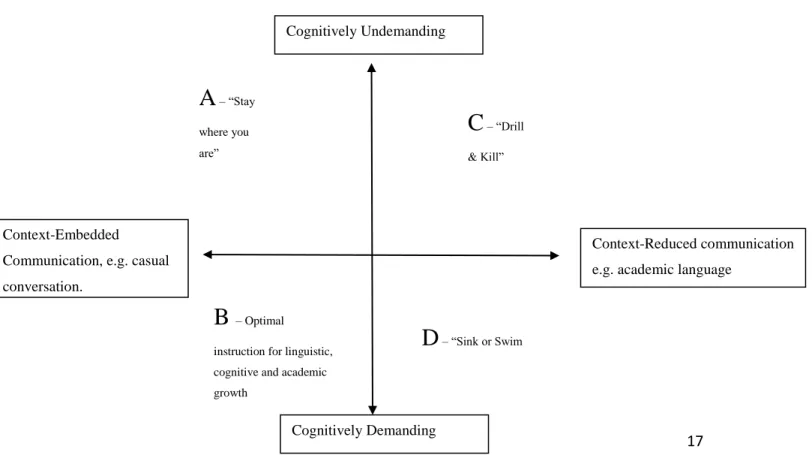
A Brief History of Reading Theory
- Audio-lingual & Psycholinguistic Models
- Interactive Approaches
- Systemic Functional Grammar & the Genre Approach
- Read to Learn & Reading Theory
- General Studies on Reading in Recent Years
- Recent Research: Reading & English language learners
- Studies on Reading Research in South Africa
- The Current Proposed R2L Research
The current study research hopes to build on the results of Rowlands' study by extending the use of the R2L approach to tertiary level. The level of the word (what words mean and how letters are arranged in patterns to form words).
Broader Issues to be Investigated
- The Failure of Progressivist Approaches
- The Development of the Genre Approach & R2L Methodology
The genre approach was developed to combat both traditionalist teaching methods, which emphasized rote learning and decontextualized activities, and progressive teaching methods. As previously mentioned, R2L was developed based on the genre approach, but with the added dimension of continuous teaching of reading skills (Rose, 2005).
A Brief Discussion of the Principal Theories
- How the Genre Approach Functions
- How R2L Builds upon the Genre Approach
- Explanation of the R2L Teaching Cycle
In the third phase, ―Independent Reconstruction of Text‖, the students independently write a similar text of the same genre. 42 R2L contributes greatly to closing the inequality gap that currently exists in the education systems of the world.
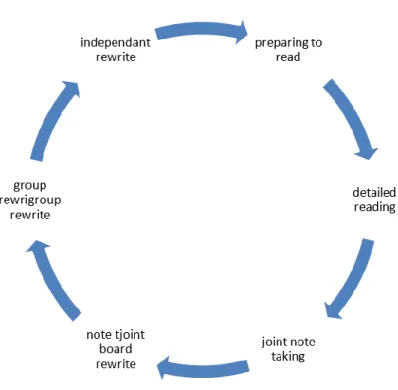
Conclusion
Introduction
Rationale for Methodology
This will mean that the same result will be received from several sources of information, as opposed to a single source of evidence. Agreement by judges that the signs of authenticity are present; and - Moving from authenticity of the data to the validation of the evidence.
Literacy Students Bring to the Classroom
The benefit of such an approach will be that deeper and more complex research questions can be answered because the researcher uses more than a single research method. This will serve to help construct validity because the same results will provide multiple measurements of the same phenomenon (Yin, 2009), given that the data (and subsequent evidence) must be obtained from at least three separate sources.
Critical Theory
The genre approach is concerned with the role of texts in preventing marginalized groups from accessing power in society. The vertical axis represents Bernstein's (2000) concept of “classification”—the degree to which instructional theory either supports individual relationships or those between social groups, and the conditions for changes in these relationships.
The Benefit of Using a Critical Research Paradigm
Action Research
Awareness of the role of both the researcher and the researched and how they influence each other. The process should be carefully monitored to measure the long-term development of the existing action plan; and.
The Cyclical Stages of Action Research
- A Detailed Explanation of the Stages
To repeat briefly, the questions are: What are the causes of the current problems that students are experiencing?. Once again, it is a growing and developing responsibility that takes place over the course of the semester.
The Use of Qualitative & Quantitative Research Methods
All questionnaire responses were recorded, but those of the tracked students underwent deeper analysis. These written tasks formed phase 6 of the R2L teaching cycle, namely ―Independent writing‖. The written tasks are then marked to measure progress and approach to genre.
Phases of the Research Project
- Phase 1: Pre-intervention
- Phase 2: Intervention
- Phase 3: Post-intervention
For example, Ralfe (2011) used the Gapadol test developed in Australia in the early 1970s. At the end of each R2L cycle, the independent writing task formed the basis of the assignment given to the students.
Further Methods of Qualitative Research
Participatory Method & Case Studies
Case Studies
A weak area of case studies is that it can be difficult to generalize the results of a particular case with the results of other groups. It is hoped that findings from other studies using R2L in South Africa and abroad, as well as triangulation of the data, will lend credence to the findings of this one and help offset this potential area of concern.
Ethics & Power
There is also the issue of potential researcher bias – the researcher must be careful to avoid becoming too involved in the progress of the participants, especially when building rapport with the students. 70 means they would complete the literacy history questionnaire, their homework grades would be recorded and they would be eligible to be selected as one of the tracked students.
Methods of Analysis & Interpretation
Participants would also receive recorded reading assessments, and any feedback or comments offered to the researcher during the research process (relating to the R2L approach) could be recorded and analyzed.
Constructivist Theory
Charmaz advocates the importance of the researcher entering the research space, paying attention to language and interaction to find implicit meanings, and also 'listening to the silences' to see what they can tell us. From this account we can get a sense of the anxiety about learning English that this student may bring to the classroom situation.
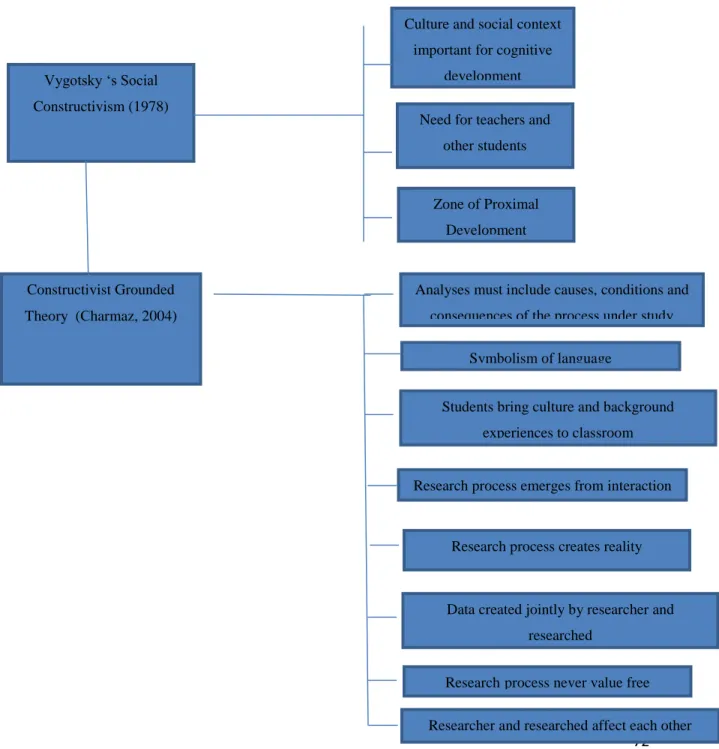
Text Analysis
In order to analyze the quantitative data, another framework will be used, namely Text Analysis. For example, after the reading assessment results were recorded, they were placed next to the results of the questionnaire to determine whether students reading below the expected grade level were denied access to school libraries.
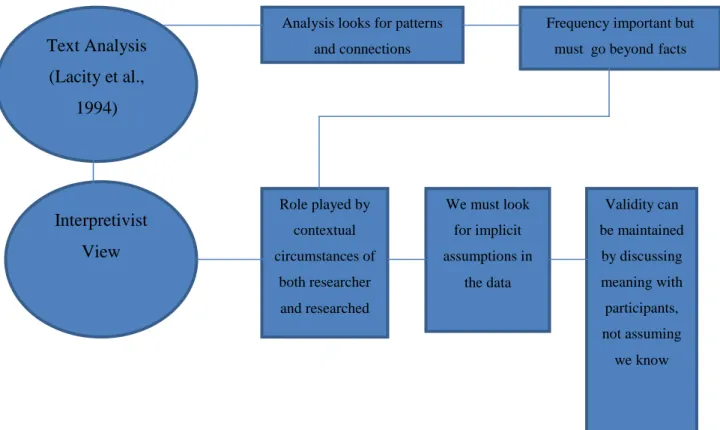
Limitations
Need for Rigour
Variables
This variable is what is measured and observed to determine the effects of the independent variables. In this study, the dependent variable is the improvement of the students' academic reading skills.
Observation
In contrast to the independent variables, the dependent variable is the participant's response – the outcome of the survey. 78 on written e-mails to the researcher without prompting, unscheduled visits by students who had completed the 2nd semester of the course, particularly to share how R2L had worked for them, as well as comments on student literacy improvement by tutors who were not ready that the new approach was in place.
Other Modules not using the R2L Approach
Time Factors
Other limitations
Conclusions
The advantage of integrating both techniques in one study is that it can provide a more holistic view of the research results. However, it could not provide insight into the feelings, attitudes and perceptions of the participants themselves.
Introduction
Several recent research studies have shown that students struggle to learn academic skills through the medium of English, as opposed to their L1. Results implied that English MOI students were held back by their low levels of English proficiency.
Systematic Data Collection & Analysis
A questionnaire on the literacy history of the tracked students was given to all students and captured using quantitative analysis (see Appendix 4). Post-intervention reading assessments of the tracked students were conducted at the end of the second semester using the same texts used in the initial assessments.
Connection of the Data Analysis to the Research Questions
Pre-intervention
- Initial Writing Task
- Assessment Scores & Values
- Initial Reading Assessments
- Method used for Conducting Reading Assessments
- Results for Pre-Intervention Reading Assessments
- Questionnaire on Literacy History
- Responses to Questionnaire
- Analysis of Responses
One of the weaker students in the group, Seth, was reading in third grade English. One of the first questions asked in the questionnaire was whether or not students used a public library.
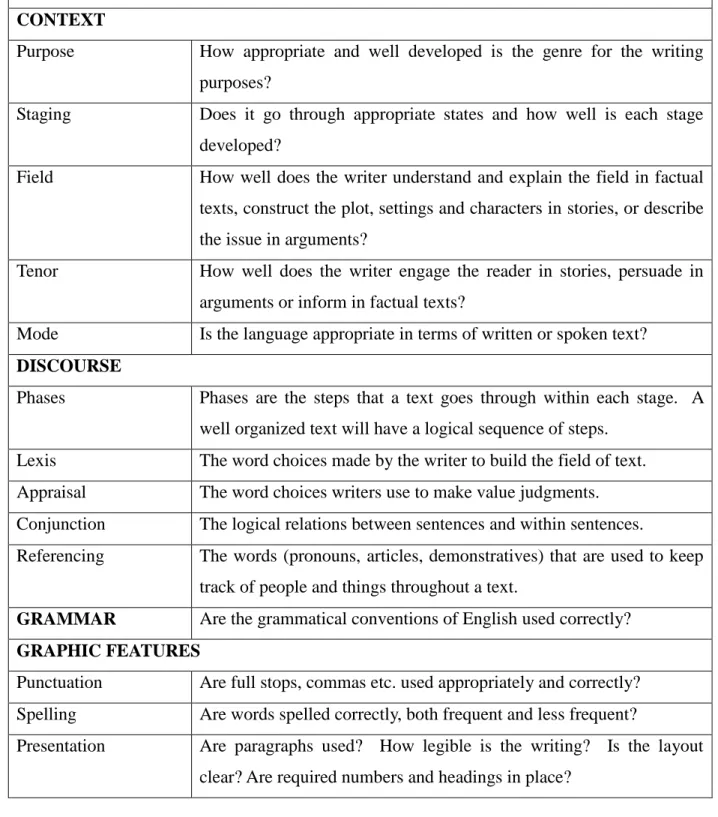
Intervention Phase
- The Text Genres used during the Teaching Process
- The Six-Stage R2L Cycle
- The Genres used for Scaffolding
- Overall Student Averages across 2011
- Focus Group Meeting
- Medium of Instruction used during Students‘ Schooling
- Comments on the possible effects of R2L
- Underlining & Finding Keywords in Texts
- Possible Problems Experienced with R2L
- Observation & Feedback from the Larger Research Group
- Responses to the R2L Approach
- Observations on Class Participation
- Co-operation with other Lecturers in the BCom4 Module
My initial instruction to the students for the explanation task was for them to find a similar example of the genre. 111 This again, because of the importance of choosing a text at the right level for students.
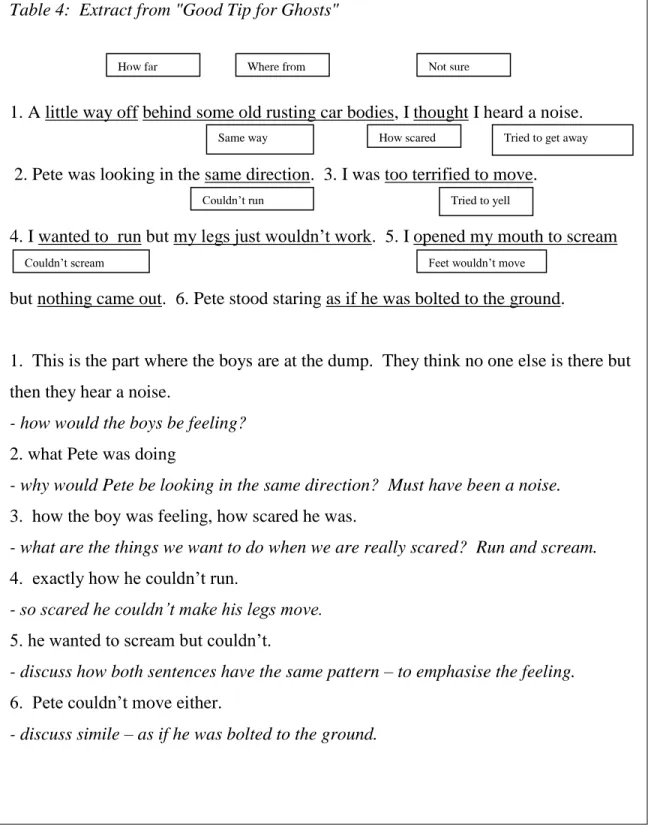
Detailed Results from Assignments and Class Tests
Performance requires an understanding on the part of the student of how specific genres are structured to organize information. Detailed reading helps the study of language features and semantic cues, while elaboration helps students grasp meaning and gain control over the field.
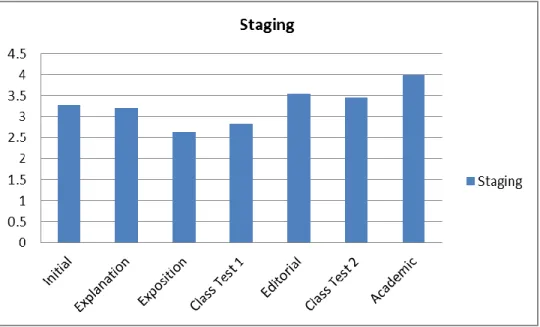
Post-intervention
- Reading Assessments
- Unsolicited Comments from Students and Colleagues
- Conclusions
Evidence for these claims is found in the New South Wales Report on the Implementation and Outcomes of the Professional Learning Program (Rose, 2011b). The results revealed that there was an overall increase in the reading skills of the students tracked at between one and six levels.
CONCLUSIONS AND RECOMMENDATIONS
Purpose of the Research
- Reflections on the Research
First, the implementation of R2L, although the intervention lasted only one year, showed an increase of between 2 and 3 levels in students' reading ability. However, there was a marked decrease in most of the term and exam grades when comparing the 1st semester results with the 2nd semester results.
Recommendations
- Benefits for Lecturers and Teachers
It is this researcher's finding that many of the students who enter this course with low levels of literacy have never been given the simple tools they need to be successful. It should perhaps be mentioned that at this stage, writing assistance for students is generally left to “The Writing Place”.
Implications for Future Research
Putting language proficiency in its place: responding to criticisms of the conversational/academic language distinction. etc.). Sequencing and pacing the hidden curriculum: how Indigenous children are being let off the hook. etc.).
Ethical Clearance Certificate
Signed Consent Form
Pre-Intervention Writing Task
Literacy History Questionnaire
How often did you get your copy of a reading text in high school.
Explanation Text for Detailed Reading
Germany is one of South Africa's most important trading partners, with trade worth more than R42 billion in 2002. South Africa is the Netherlands' most important trading partner on the African continent and the Netherlands is among South Africa's top ten. its most important trading partners.
Original Explanation Text - Independent Reading
New Text Selected for Independent Reading
Exposition Text for Detailed Reading
An example is the market on which oil is bought and sold: the world oil market. Real estate includes land and buildings – the things we call property in everyday language – and durable goods such as machinery and equipment.
Exposition Text for Writing Task
There are always costs involved, even if these costs are not always apparent to the consumer of the goods or services in question. The main point of this principle is that there are always costs involved in any use of scarce resources.
Narrative Text for Detailed Reading
Editorial Text for Detailed Reading
Expository Text – Logical Connectors
Academic Text for Detailed Reading
1) The development of high levels of bilingual literacy through appropriate LiEPs in South African schools could provide greater access to political and economic power for students, with benefits not only for themselves but also for society as a whole. 5) It would also create the best possible conditions for achieving high levels of academic literacy in both languages. 6) As a result, students would be better able to access higher education and employment and contribute to the development of society.
Academic Text for Independent Writing
Copies of Reading Assessment Texts
Samples of Students Writing
Detailed Assessment Scores for Tracked Students
Copy of Zulu Text for Reading Assessment
Selected Notes from Researcher's Journal
Term Marks and Exam Results for all ELDV Participants
